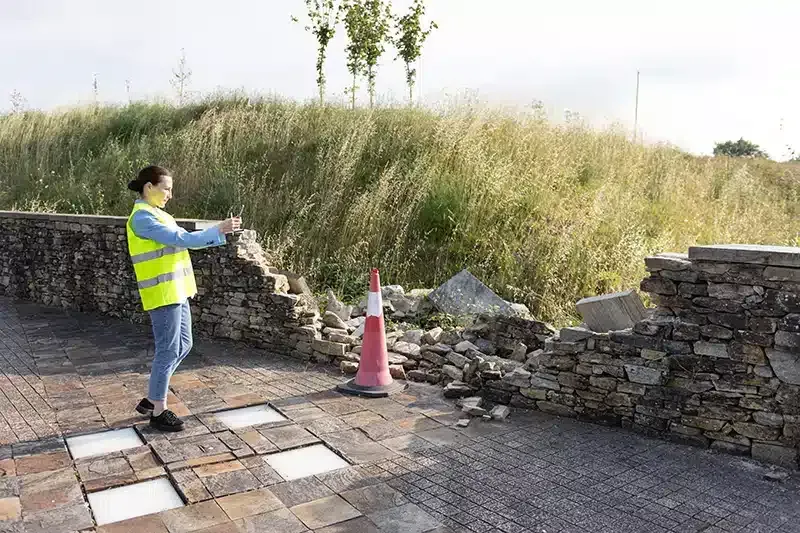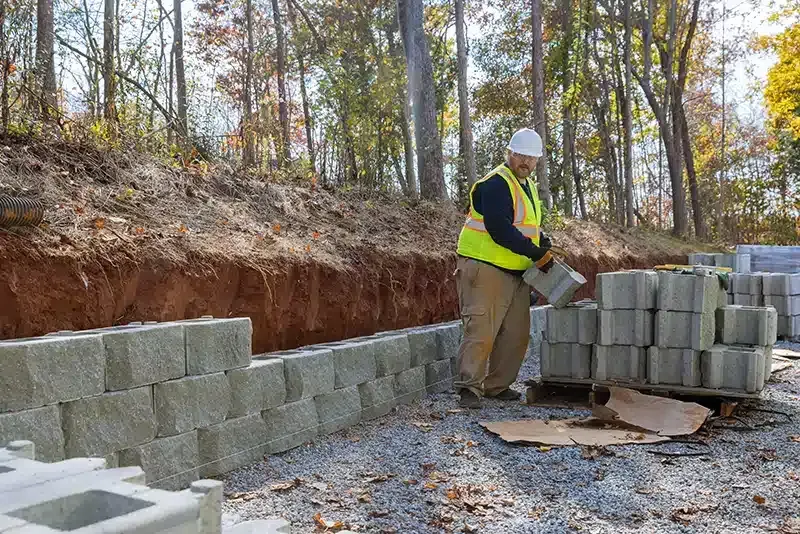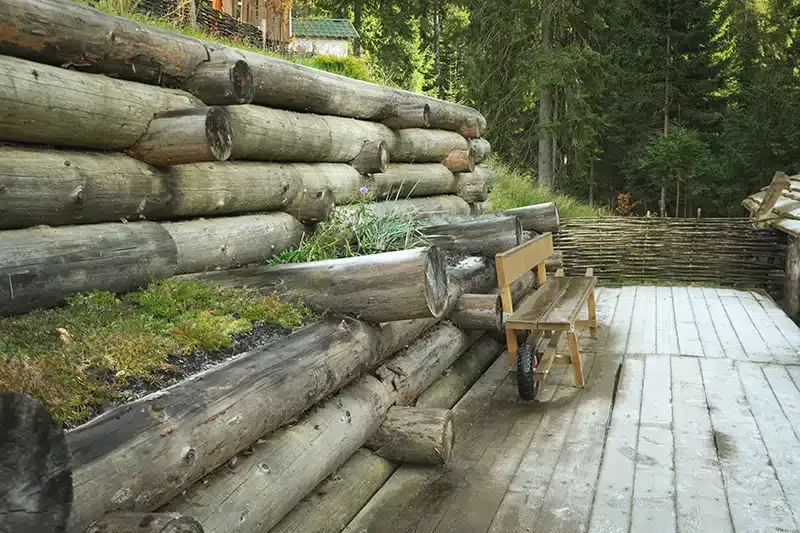How Can a Retaining Wall Company Enhance the Aesthetic Appeal of Your Property?
A retaining wall company can play a pivotal role in enhancing your property's aesthetic appeal.
They can design walls that provide necessary support and blend beautifully with your landscape.
You can create a harmonious outdoor space by choosing materials that align with your home's style and incorporating features like curves and tiered levels.
But how do these elements elevate your property's overall charm?
Exploring these design options could lead to surprising transformations.
Benefits of Retaining Walls
Retaining walls are more than just functional structures; they offer a range of advantages that improve your landscape's usability and aesthetics.
Soil Erosion Management
Remaining walls prevent soil erosion on sloped areas, keeping your landscape intact.
- Prevents runoff during heavy rains.
- Protects your home's foundation from shifting soil.
- Promotes healthier plant growth by maintaining stable soil conditions.
Improved Drainage
Properly designed retaining walls can enhance your property's drainage capabilities.
- Direct water flow away from your home to reduce pooling.
- Minimizes risks of water damage to foundations and landscaping.
- Simplifies yard maintenance by managing runoff efficiently.
Aesthetic Enhancements
Retaining walls add visual interest to your outdoor space while improving functionality.
- Create distinct levels for gardens, pathways, or seating areas.
- Act as a beautiful backdrop for plants and flowers.
- Provide structure and design elements that elevate your landscape's appeal.
Boost in Property Value
A well-constructed retaining wall can significantly increase your property value.
- Signals thoughtful design and care to potential buyers.
- Maximizes usable outdoor space, adding functionality.
- Enhances curb appeal, leaving a lasting impression.
By incorporating retaining walls, you combine practical solutions with aesthetic improvements, creating a beautiful and durable landscape.
Design Options and Materials
Choosing the right design and materials for your retaining wall is essential to achieving functionality and aesthetic appeal. Various options allow you to customize a wall that complements your landscape.
Material Choices
Selecting the right material is key to balancing durability and style.
- Concrete Blocks: Versatile and available in various shapes and colors, ideal for modern or traditional looks.
- Natural Stone: Offers rustic charm and blends seamlessly with natural surroundings.
- Timber: Eco-friendly and warm, perfect for adding character but may require more maintenance.
Design Elements
Incorporate creative design features to make your retaining wall visually striking.
- Textures and Patterns: Opt for stacked stone for a classic feel or smooth concrete for a contemporary look.
- Curves and Levels: Add visual interest by creating curved walls or tiered levels that double as planting spaces.
- Integration with Landscaping: Blend the wall with gardens, paths, or outdoor seating areas for harmony.
Enhancing Curb Appeal
A thoughtfully designed retaining wall enhances the beauty and value of your property.
- Boosts visual impact with unique textures and materials.
- Increases functionality with features like seating areas or integrated lighting.
- Complements your home's style, creating a cohesive outdoor environment.
By selecting the right materials and designs, your retaining wall becomes more than just a structural element—it transforms into an elegant feature that elevates your entire property.
Enhancing Landscape Integration
A well-designed retaining wall can elevate your outdoor space by seamlessly blending with the landscape. Considering your yard's natural features, you can create a wall that enhances beauty while serving its functional purpose.
Harmonizing with Your Landscape
A professional retaining wall company will ensure your wall complements the environment.
- Material Selection: Natural stones or earthy tones create a cohesive and organic feel.
- Colors and Textures: Matching the wall to your existing flora and yard elements ensures harmony.
- Floral Accents: Adding plants or flowers around the base softens the wall's appearance and boosts charm.
Design Features for Flow and Depth
Thoughtful design elements can transform your wall into a standout feature.
- Curved Walls: Mimic the natural flow of your garden for a cohesive look.
- Tiered Designs: Add depth and create levels for planting or functional use.
- Height Customisation: Adjust heights to maximize both aesthetics and practicality.
Elevating Your Property’s Appeal
Integrating your retaining wall with the landscape can enhance its overall allure.
- Creates a visually inviting outdoor space.
- Serves as a functional yet stylish focal point.
- Makes your yard more appealing for relaxation and entertaining.
With professional design and installation, your retaining wall becomes an elegant and practical enhancement that transforms your property into a picturesque retreat.
Incorporating a professionally designed
retaining wall into your landscape enhances its functionality and elevates its aesthetic appeal, creating a harmonious and inviting outdoor environment.
With the right choice of materials, thoughtful design features, and seamless integration with your property's natural elements, a retaining wall becomes a focal point that boosts curb appeal, adds value, and transforms your outdoor space into a beautiful and practical retreat.


